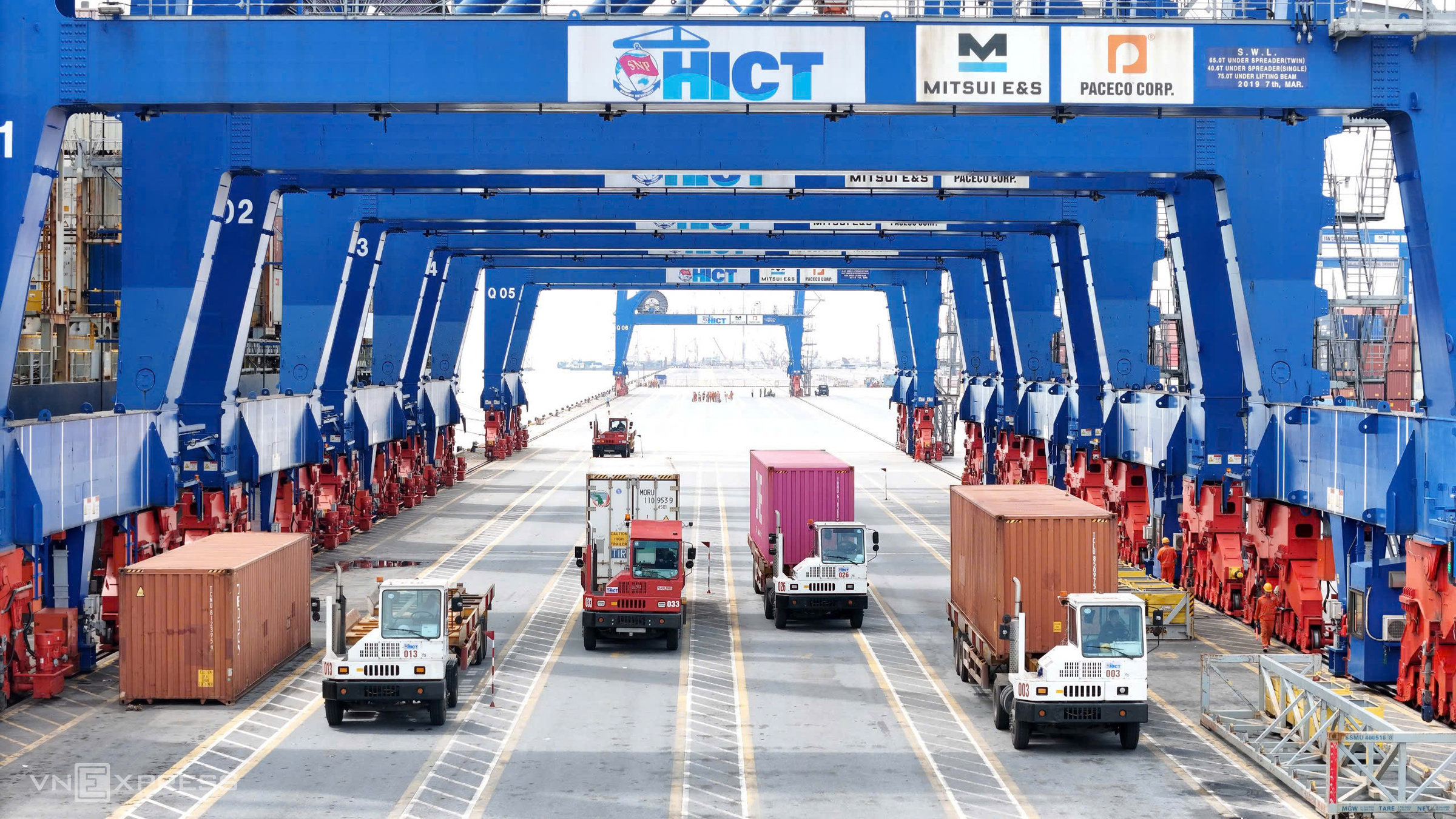This information was released by the Asian Development Bank (ADB) on 23/7. According to ADB data, Vietnam's economic growth is expected to slow in the short term due to US tariff policies.
They forecast GDP growth of 6.3% this year and 6% next year, down 0.3% and 0.5% respectively from their projections 3 months ago. Inflation is also expected to decrease to 3.9% this year and 3.8% in 2026.
 |
Lach Huyen Port, Hai Phong, 21/1. Photo: Le Tan |
Lach Huyen Port, Hai Phong, 21/1. Photo: Le Tan
ADB experts are concerned that US countervailing duties will affect export demand for the remainder of 2025 and 2026. According to the Purchasing Managers' Index (PMI), Vietnam's industrial production has slowed since late last year. However, analysts expect that domestic reforms could mitigate risks to the economy if implemented effectively and quickly.
In the first 6 months of the year, the economy was driven by strong export and import growth, along with an increase in foreign investment disbursement. Committed foreign direct investment (FDI) increased by 32.6%, and disbursed FDI increased by 8.1% compared to the same period last year. These figures demonstrate strong international confidence in Vietnam's economic prospects, according to the ADB.
In addition, public investment disbursement reached its highest level since 2018, at approximately 31.7% of the plan, an increase of 19.8% compared to the same period last year.
The ADB's lowered growth forecast contrasts with those of many international organizations. Earlier this month, United Overseas Bank (UOB) raised its forecast for Vietnam's economic growth this year by 0.9% from its previous projection, to 6.9%. The Singaporean bank adjusted its forecast after second-quarter GDP growth exceeded expectations. This figure is still 0.1% lower than the forecast before the US imposed countervailing duties on several countries, including Vietnam.
This year, Vietnam aims for economic growth of 8% or more. At a conference last week, Prime Minister Pham Minh Chinh said the government has set a specific growth target of 8.3-8.5% this year to create momentum for double-digit growth in the 2026-2030 period. According to data from the General Statistics Office (Ministry of Finance), second-quarter GDP reached 7.96%, exceeding Bloomberg's (6.85%) and UOB's (6.1%) forecasts. For the first half of the year, the economy grew by 7.52%, the highest since 2011.
In addition to adjusting Vietnam's growth forecast, the ADB also lowered its overall growth forecast for the Asia-Pacific region to 4.7%, down 0.2% from its previous projection. The economic outlook for developing countries in the region could continue to be affected by escalating US trade and tariff tensions, supply chain disruptions, and a weaker-than-expected Chinese real estate market.
The growth forecast for China—the region's largest economy—remains unchanged at 4.7% this year and 4.3% in 2026. Policies to stimulate consumption and industrial activity are expected to partially offset the impact of the weakening real estate market and declining exports.
India, the region's second-largest economy, is projected to see GDP growth of 6.5% in 2025 and 6.7% in 2026, down 0.2% and 0.1% respectively, due to trade instability and higher import tariffs from the US.
Thuy Truong












